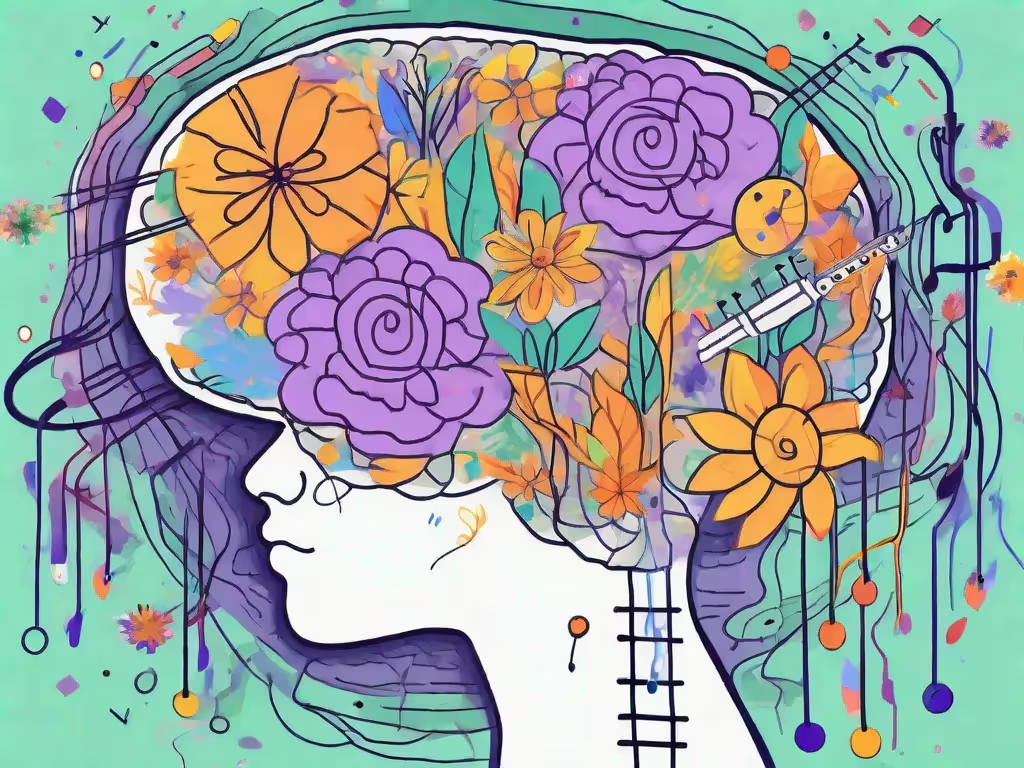Our mind state determines our reality, and meditative thinking can greatly improve the way we perceive experiences. But how do we live in the moment and bring all the benefits of meditation and mindfulness into our day-to-day lives? The role of mindfulness and meditative thoughts help achieve wellness and healing, but it can be easy to live our lives differently on and off the meditation cushion.
“In meditation, you learn how to get out of your own way long enough for there to be room for your own wisdom to manifest, and this happens because you’re not repressing this wisdom any longer.”
― Pema Chodron
In this article, we'll:
- get a better understanding of why mindfulness works and how it works
- explore the language of tranquility, stillness, and quiet.
- learn how to incorporate meditation and mindfulness into daily life
- learn to use words to influence meditation practices and the ability to bring ourselves back to the present moment.
Mindfulness Thoughts: The Language of the Heart
Meditation and mindfulness are often used synonymously. While there's a direct connection between mindfulness and meditation, mindfulness does not require dedicated time, silence, and space to practice. It can be deployed at any time during your day. Meanwhile, both come with incredible benefits, such as reduced stress and hypertension, reduced anxiety and depression, and increased overall well-being.
At its core, mindfulness is simply about doing any task, even if that task is simply breathing with compassion and presence. Due to its adaptive and secular nature, making it a practice that those from any belief system can practice, mindfulness is something that can work in the classroom or workspace as easily as it can work at home.
According to John Kabat-Zinn, the creator of Mindfulness-Based Stress Reduction (MBSR) there are mindfulness attitudes that can support your practice by helping you cultivate the right mindset. They are as follows: nonjudging, gratitude, patience, trusting the process, non-striving, acceptance, letting go, generosity, and a beginner's mind - even after you've been practicing for a long time. If this seems like a lot to remember, you can focus on what these words means to you, especially as they pertain to your meditation practice. So let's get into the practice itself.
How to Practice Mindfulness
For many people, such as a co-worker of mine from a few years ago, mindfulness seems impossible. I remember this person explaining to me that she can't slow her mind down long enough to "get mindful" at work, let alone meditate. She went on to say that she didn't see a way of emptying her mind and didn't particularly like the feeling of being alone with her thoughts and breath. If any of that resonates with you, read on.
“You can't stop the waves, but you can learn to surf.” –Jon Kabat-Zinn
If mindfulness seems out of reach, you may find comfort in knowing that as we begin to practice and break through fears of what might arise when we're focused, we often see that the mind is easier to understand and manage when we do pay attention. It's almost as though attention is a ray of light that, when focused on a thought, allows for more emotional clarity. When we're on autopilot or distracted, on the other hand, we can get caught up in a whirlwind of stress or less optimal emotions and thoughts. We can breathe with focus to support our attention and deepen our meditation practice, but that's just the beginning.
"The energy of the mind is the essence of life." –Aristotle
Mindfulness thoughts are about paying attention above all else, and there is beauty in this practice. You can breathe and appreciate any moment in your life by practicing mindfulness. To watch the mind is a skill that provides freedom from attachment because it utilizes similar tools associated with releasing judgment and taking time to settle into the experience at hand.
Exercises to increase mindfulness through meditation
While mindfulness does not rely on a structured meditation practice, using some kind of intentional practice can be an excellent place to begin. While in meditation or movement, we can practice the skills of mindful awareness that we can, eventually, take with us everywhere we go. According to the Mayo Clinic, mindfulness meditation is often practiced to address physical issues as well, such as addiction, burnout, insomnia, physical pain, and PTSD. For this reason, a sitting practice might not be possible for everyone. Below is a list of mindfulness meditation practices with links to practices you can try right now.
- Walking mindfulness meditation - It is recommended that you practice walking meditation outside if possible. Either way, you only need to take 5 to 10 mindful steps in one direction to create the space to practice. To begin, walk slowly, focusing on the way your foot hits the ground and the shift of weight in your body settling down. Feel the total sensation of taking one step then leaning into the next. Breath with focus as you walk, feeling the way the body relaxes and reingages with breath and each step. By moving with mindfulness, you can begin to see how mindfulness may be incorporated into nearly every activity.
- Body scan meditation: Able to be done quickly or slowly, a body scan meditation is classically settling attention on one foot, beginning with the toes and working up to the top and bottom of the foot, the heel, the ankle, and so forth, until you are to the top of one leg. You then begin with the other foot and work your way up, eventually bringing your attention to every part of the body. To stay the course, you can notice the sensations and label them as you go, such as throbbing, pulsing, tingling, heat or coolness, or tension. You realize as you practice body scan meditations that a mindful state reveals nuance of feeling and changes in the body that you may not have otherwise recognized.
- Yoga practices: Yoga is mindful if done with intention and focus, rather than a desire to rush through. Yoga by its very nature is about seeing the world through new eyes and different perspectives while building bodily awareness. I recommend beginning with a slower practice, such as yin or hatha, if you'd like to focus on the mindful state of the journey. The deep focus yoga places on the breath and movement can be powerful at any pace and in any style.
- Mindful journaling: I say a lot about mindful journaling here. It is a practice that I find particularly powerful because writing allows the thoughts to flow in a unique and valuable way. As you write with attention, you begin to realize how the mind oscillates from past to present to future and as you write, capturing how you feel in the moment, you'll begin to find a unique objectivity and clarity.
- Design a mindful sleep routine: This can mean making choices that allow you to access meditative thinking by winding down your day with awareness. Everything from setting up your sleep space to powering down devices can ensure you are better able to feel your body slowing for the day. As you relax and prepare for rest, begin to focus on the internal quiet and consciously be with what is as you invite in the present moment.
Mindfulness and Mindful Thoughts in Day to Day Life
“What you are is what you have been. What you’ll be is what you do now.” –Buddha
The healing power of mindfulness every day and mindfulness meditation can be achieved at any level and with anywhere from no experience to years of meditation under your belt. You don't have to be a Buddhist monk to gain benefits from this practice. Mindfulness can augment your communication skills and emotional intelligence, while also helping you to cultivate self-awareness and a better mood. How you achieve mindful thinking in the moment is by training yourself little by little to relax and take a step back to appreciate what is happening without adding labels or judgment.
You'll notice a lot of the terms John Kabat-Zinn mentioned in his attitudes to support mindful thinking. Reducing stress and increasing happiness are side effects when we navigate the world from a less-judgmental place. Some meditation teachers say this is about communicating from the heart or the spirit rather than the mind. This can be a helpful visual for you if you are having trouble accessing the stillness and perspective mindfulness brings.
As a thought experiment, let's imagine you are with a person or in a situation that triggers you. For me, this is a traffic jam. For you, it might be something else. Imagine yourself in that scenario and practice a quick body scan, moving your attention up your body simply watching the sensation. As you settle into the awareness, notice where there is a lot of activation, such as pressure or tingling, aches and pains, or simply a surge of energy. Notice if you breathe differently. If you get distracted, come back to this scene with compassion and awareness.
“You are the sky. Everything else – it’s just the weather.”
― Pema Chodron
As you vividly imagine yourself in this stressful environment, tell yourself that you do not have to be calm. You do not have to feel anything. Instead, practice compassion and be still with what is. Notice what it feels like to release judgment, distress, or concern and allow as you enter a state of mindfulness. You might even find tiny moments of joy and happiness with mindful awareness. Notice the shifts in the mind, breath, and body.
Leveraging the beginner's mind and a sense of gratitude, we can start exploring sensations, even unpleasant ones, with new awareness. And in so doing, they become less distracting and more manageable. Mindfulness meditation and mindfulness in daily life can be seen as exercises in curiosity about the mind and body. We can leverage this curiosity to get more value from our lives and freedom from unhelpful thoughts without striving or struggling.
“Find space in your day when you can practice mindful breathing and letting go of tensions.” –Thich Nhat Hanh, How to Relax
To find more practices to hone your mindfulness skills and find the present moment with a community of like-minded meditators, go here.



.webp)







.avif)

%20(1).avif)


.avif)
.avif)
.webp)


.avif)


















































































































.avif)

















.svg)

.avif)







